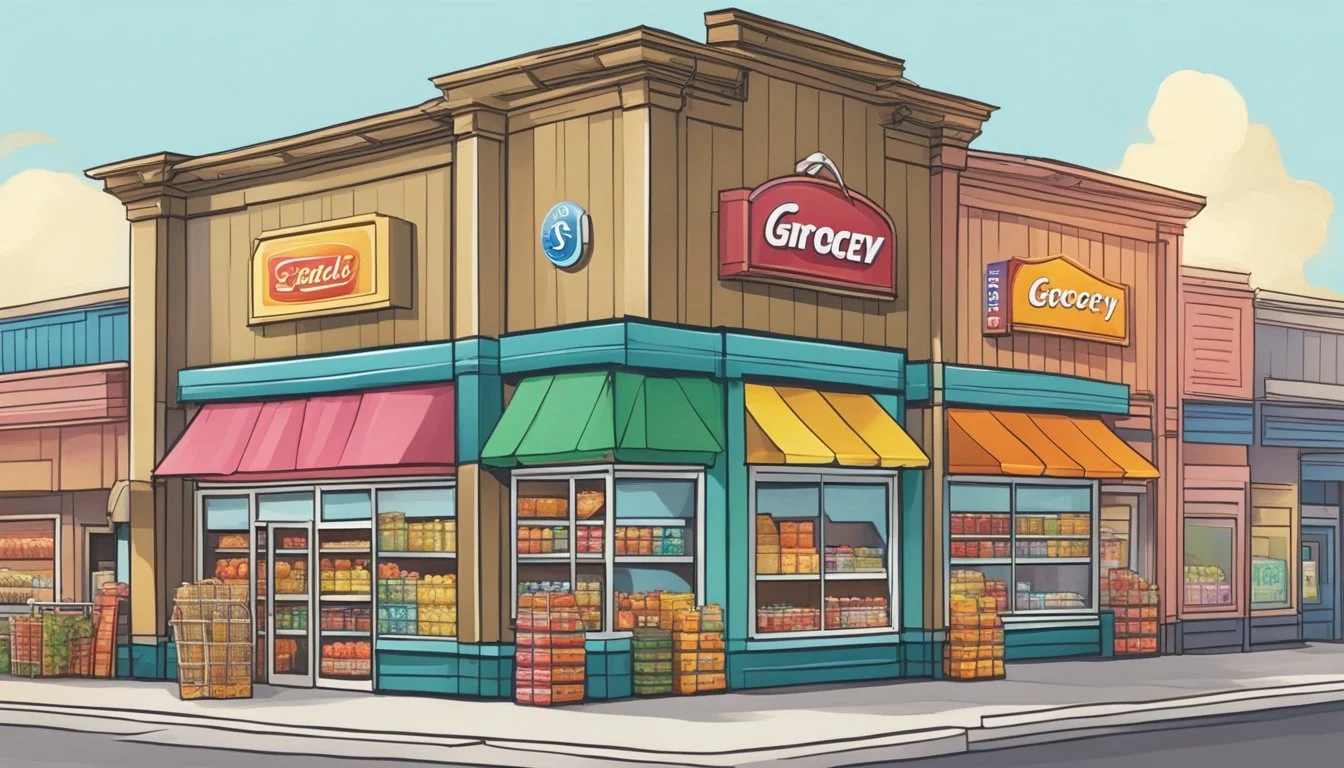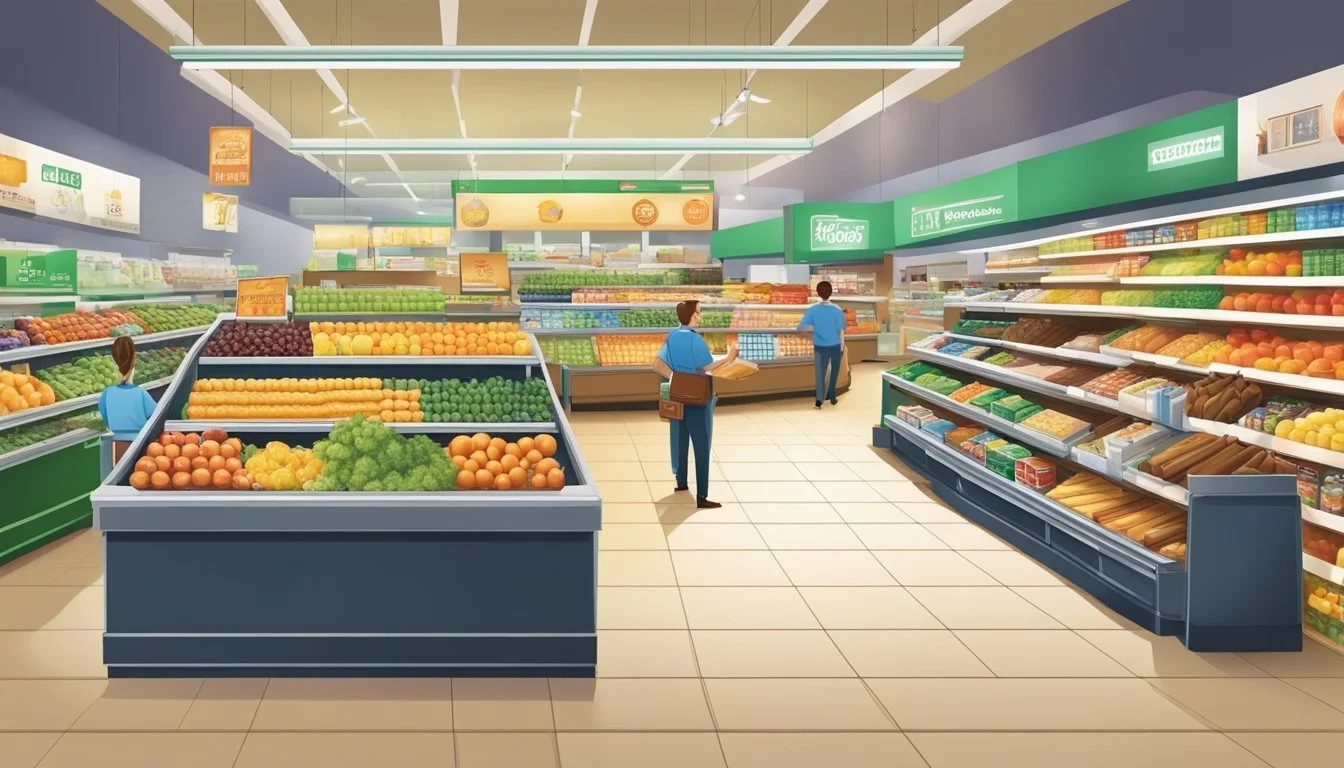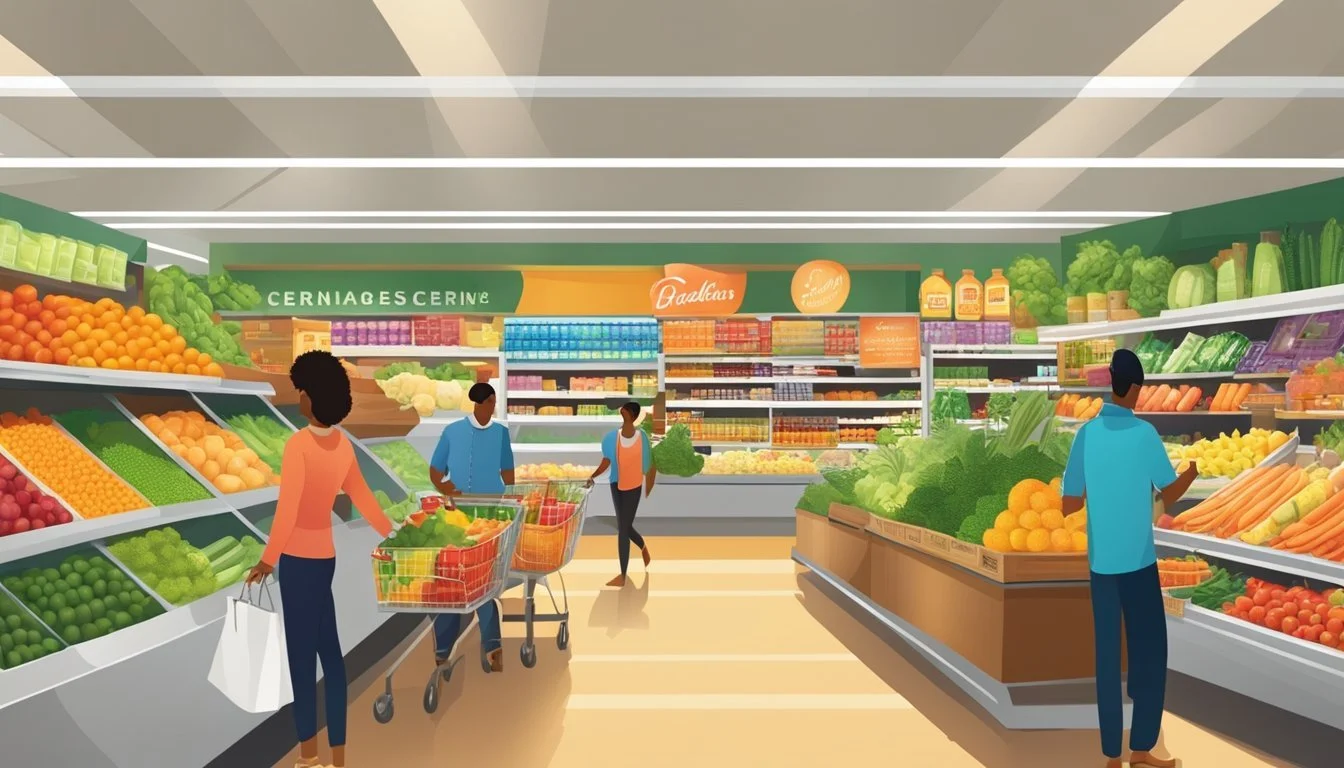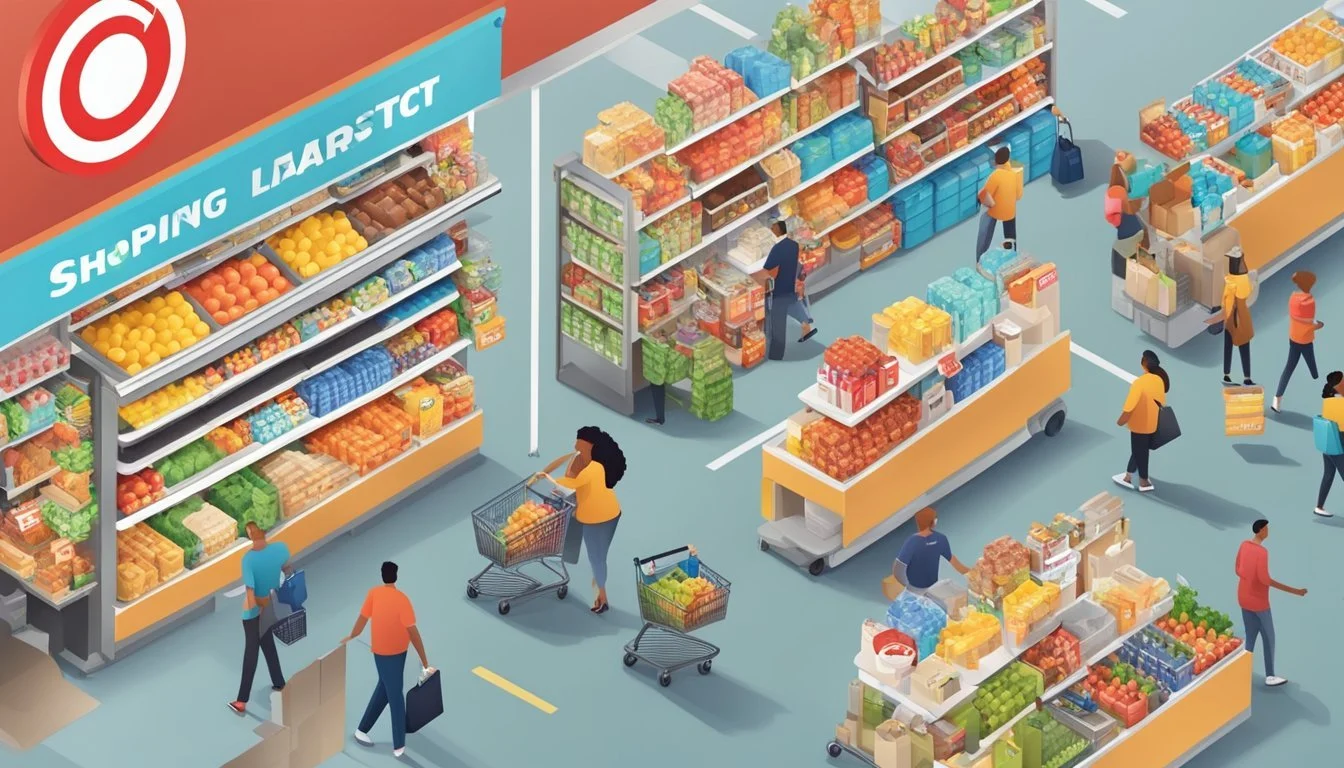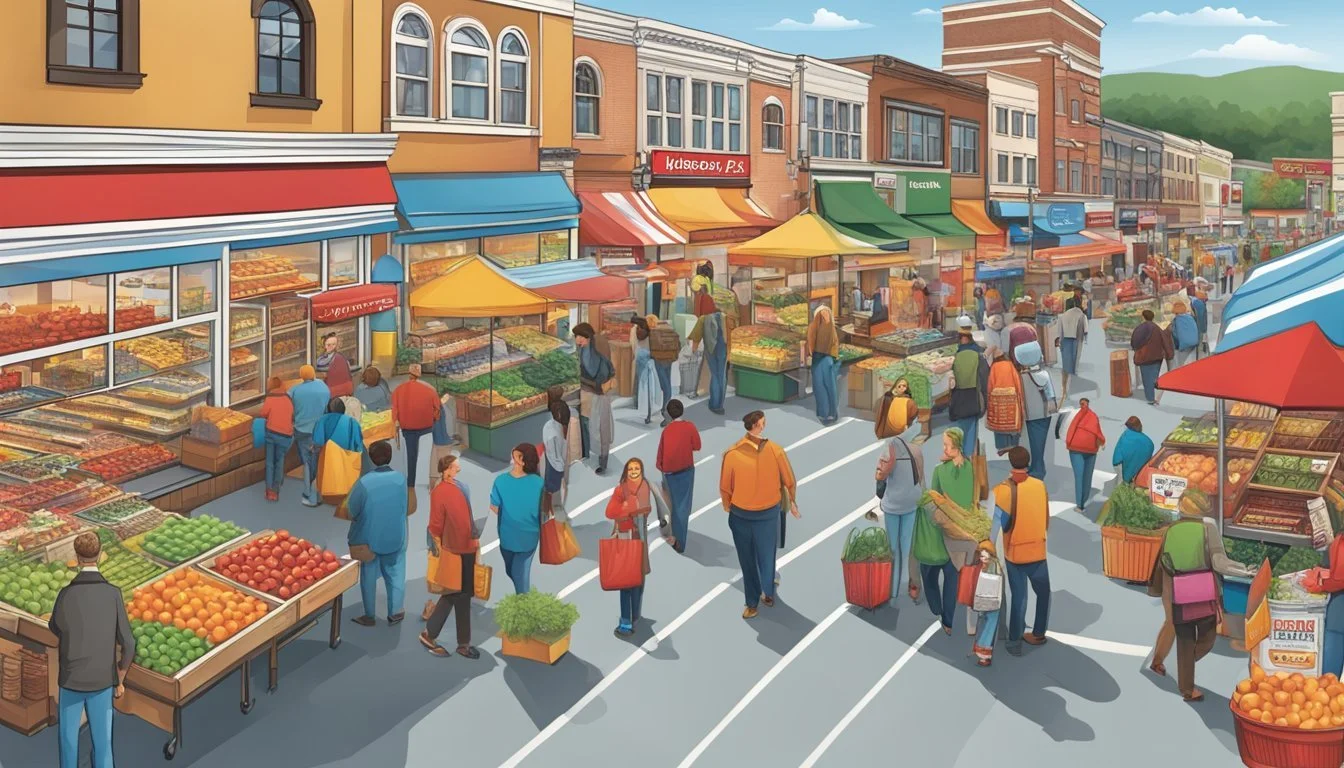Target vs Giant Eagle
A Comprehensive Comparison of Prices, Selection, and Service
Grocery shopping is a crucial part of everyday life, and choosing the right store can make a significant difference in both quality and affordability. Target and Giant Eagle are two popular options for many shoppers, each with its own strengths and weaknesses.
Target offers better overall value compared to Giant Eagle, with lower prices on many common grocery items. This price advantage can lead to substantial savings for families over time. Target's grocery selection has expanded in recent years, making it a more viable option for one-stop shopping.
Giant Eagle, on the other hand, tends to focus more on providing a traditional grocery store experience. It often offers a wider variety of specialty and gourmet items compared to Target. The choice between these two stores ultimately depends on individual preferences and shopping habits.
Comparing Shopping Experiences
Target and Giant Eagle offer distinct shopping environments that cater to different customer preferences. Each store's layout, service quality, and checkout process contribute to the overall experience.
Store Layout and Navigation
Target's layout features wide aisles and clear signage, making it easy for shoppers to find what they need. The store's open floor plan allows for quick navigation between departments. Target often groups related items together, creating intuitive shopping zones.
Giant Eagle typically has a more traditional grocery store layout. Produce sections are usually near the entrance, with aisles organized by food categories. Some Giant Eagle stores have a market-style feel with specialty departments like bakeries and delis prominently displayed.
Both chains prioritize cleanliness, but Target's brighter lighting and color-coded sections can make products more visually appealing.
Customer Service Quality
Target emphasizes a friendly, approachable atmosphere. Staff members are trained to be helpful without being intrusive. They often wear easily identifiable red shirts and can assist with product locations or general inquiries.
Giant Eagle tends to focus on personalized service, particularly in specialized departments. Butchers, bakers, and deli staff often provide custom orders and product recommendations. Some Giant Eagle locations offer carry-out services to assist customers with their groceries.
Both stores generally maintain a high standard of customer service, but Giant Eagle's emphasis on specialty departments may appeal to shoppers seeking expert advice on specific products.
Checkout Efficiency
Target has embraced technology to streamline the checkout process. Many locations offer self-checkout options and mobile payment systems. Target's app allows customers to scan items as they shop, potentially reducing wait times at the register.
Giant Eagle also provides self-checkout kiosks in many stores. Their loyalty program often integrates with the checkout process, applying discounts automatically. Some Giant Eagle locations feature express lanes for customers with fewer items.
Wait times can vary at both stores depending on location and time of day. Target's larger stores may have more registers open during peak hours, while Giant Eagle's smaller format might lead to quicker transactions during off-peak times.
Variety and Quality of Goods
Target and Giant Eagle offer distinct selections of groceries and household items. Each store caters to different customer needs through their product offerings, quality standards, and specialization in certain categories.
Fresh Produce Selection
Target's produce section is compact but well-curated. It focuses on staple fruits and vegetables, with a limited organic selection. The quality is generally good, though the variety may not match specialized grocers.
Giant Eagle, in contrast, boasts an extensive produce department. It features a wide range of seasonal and exotic fruits and vegetables. Their commitment to freshness is evident in the frequent restocking and quality control measures.
Giant Eagle often partners with local farmers, providing customers with regional and specialty produce options. This approach enhances the overall freshness and supports local agriculture.
Meat and Deli Options
Target's meat and deli selections are basic but reliable. Pre-packaged meats and a small deli counter offer convenience for quick shopping trips. The quality is consistent, though the variety is limited compared to full-service grocers.
Giant Eagle excels in this category with a full-service meat department and expansive deli. Butchers provide custom cuts and advice. The deli offers a range of freshly sliced meats, cheeses, and prepared foods.
Giant Eagle's meat quality is often superior, with options like prime cuts and specialty items. Their deli also features house-made salads and ready-to-eat meals, catering to busy shoppers seeking quality prepared foods.
Organic and Special Dietary Products
Target has significantly expanded its organic and special dietary offerings in recent years. The Good & Gather brand includes many organic options. Gluten-free, vegan, and other specialty products are available, though the selection may be limited.
Giant Eagle provides a more comprehensive range of organic and special dietary items. Dedicated sections for gluten-free, vegan, and other dietary needs make shopping easier for customers with specific requirements.
Both stores offer organic produce, but Giant Eagle typically has a larger selection. Giant Eagle also tends to have more variety in specialty products like plant-based meats and dairy alternatives.
Private Label Offerings
Target's private label brands, including Good & Gather and Market Pantry, offer quality products at competitive prices. These brands cover a wide range of grocery categories, from pantry staples to snacks and beverages.
Giant Eagle's store brands, such as Nature's Basket and Giant Eagle, provide similar value. Their private label products often match or exceed the quality of national brands, offering customers savings without compromising on taste or quality.
Both stores have invested in developing premium private label lines. Target's Good & Gather Signature and Giant Eagle's Market District products offer gourmet options at prices lower than comparable name-brand items.
Pricing Analysis
Target and Giant Eagle employ different pricing strategies to attract customers. Both stores offer competitive prices on groceries and household items, but their approaches to discounts, promotions, and overall value can vary significantly.
Everyday Prices and Discounts
Target often features lower everyday prices on many grocery items compared to Giant Eagle. The retailer uses a strategy of offering consistently low prices across a wide range of products. Target's store brand, Good & Gather, provides budget-friendly options for staple items.
Giant Eagle focuses more on weekly sales and promotions. Their circular ads feature deep discounts on select items, particularly fresh produce and meats. Giant Eagle's fuelperks+ program allows customers to earn points on purchases that can be redeemed for discounts on gas or groceries.
Price Comparison Across Popular Items
A price comparison of common grocery items reveals some differences between the two stores:
Item Target Giant Eagle Milk (1 gallon) $3.29 $3.49 Eggs (1 dozen) $2.99 $3.19 Bread (1 loaf) $2.49 $2.79 Bananas (1 lb) $0.59 $0.69
Target generally offers slightly lower prices on these staple items. However, Giant Eagle may have better prices on certain products when they're on sale.
Membership Benefits and Savings
Target's REDcard provides a 5% discount on most purchases, including groceries. This can lead to significant savings for frequent shoppers. The Target Circle program offers additional personalized deals and cashback rewards.
Giant Eagle's Advantage Card is free and allows customers to access sale prices and earn fuelperks+. The more customers spend, the more they can save on gas and groceries. Giant Eagle also offers digital coupons that can be loaded directly to the Advantage Card.
Both stores provide ways to save through their respective apps, which feature exclusive deals and easy-to-access digital coupons.
Geographical Convenience
Target and Giant Eagle offer different geographical advantages for shoppers. Their store locations and regional presence impact accessibility and shopping options for consumers across various areas.
Store Density and Accessibility
Target operates over 1,800 stores across the United States, with a presence in all 50 states. This widespread distribution provides many consumers with convenient access to Target locations. In urban and suburban areas, Target stores are often found in shopping centers and standalone locations.
Giant Eagle has a more concentrated presence, with approximately 475 stores. The chain focuses on specific regions, particularly in Pennsylvania, Ohio, West Virginia, Indiana, and Maryland. This regional focus allows Giant Eagle to tailor its offerings to local preferences.
Regional Availability and Expansion
Target's national presence gives it an edge in terms of recognition and availability across the country. The company continues to expand, opening new stores in various locations each year. This growth strategy aims to increase accessibility for more consumers.
Giant Eagle maintains a strong regional identity on the East Coast and in the Midwest. The company's expansion efforts focus on strengthening its presence in existing markets rather than spreading to new states. This approach allows Giant Eagle to build customer loyalty and adapt to local tastes.
In areas where both retailers operate, consumers benefit from increased competition and more shopping options. However, shoppers in Giant Eagle's core regions may find more store locations within a smaller radius compared to Target's broader but potentially less dense coverage.
Customer Loyalty and Rewards
Target and Giant Eagle both offer loyalty programs to reward customers for their purchases. These programs provide various perks and exclusive deals to members.
Loyalty Programs and Perks
Target's loyalty program, Target Circle, is free to join and offers 1% cashback on purchases. Members earn points that can be redeemed for discounts on future purchases. Giant Eagle's Advantage Card program allows customers to accumulate points for fuel discounts and grocery savings.
Target Circle members receive personalized offers based on their shopping habits. Giant Eagle's program offers similar tailored discounts. Both retailers provide birthday rewards to their loyalty members.
Target's RedCard, available as a debit or credit card, offers an additional 5% discount on purchases. Giant Eagle's Advantage Card can be linked to a checking account for direct payment.
Exclusive Deals for Members
Target Circle members get access to special discounts and early access to certain sales events. These deals often include significant savings on popular items across various departments.
Giant Eagle offers weekly digital coupons exclusively for Advantage Card holders. Members can load these offers directly to their cards for automatic savings at checkout.
Both retailers provide member-only pricing on select items throughout their stores. Target frequently offers Circle-exclusive discounts on electronics and home goods. Giant Eagle focuses more on grocery and household item deals for Advantage Card users.
Company Ethos and Brand Image
Target and Giant Eagle have distinct brand identities that shape their relationships with customers and communities. Their approaches to social responsibility and consumer perception differ in key ways.
Commitment to Communities and Sustainability
Target emphasizes corporate social responsibility through its Target Circle program, which allows customers to direct charitable donations to local organizations. The company has set ambitious sustainability goals, aiming for 100% renewable electricity in its operations by 2030.
Giant Eagle focuses on local community engagement, often partnering with regional charities and food banks. The grocery chain has implemented sustainability initiatives like reducing food waste and increasing energy efficiency in stores.
Both companies have made efforts to source products more ethically and sustainably, though Target's larger scale allows for broader initiatives across its supply chain.
Perception and Trust Among Consumers
Target has cultivated a reputation for affordable style and design, appealing to a wide range of consumers. The company consistently ranks high in customer satisfaction surveys for its shopping experience and product quality.
Giant Eagle is often perceived as a more premium grocery option, with a focus on fresh produce and prepared foods. The chain has built strong loyalty among families in its core markets through personalized rewards programs and community involvement.
In terms of consumer trust, both companies fare well. Target's brand recognition extends nationwide, while Giant Eagle's regional focus allows for deeper connections in its operating areas.
Ancillary Services and Product Lines
Target and Giant Eagle offer various services and product lines beyond groceries to enhance the shopping experience. These extras help differentiate the stores and provide added convenience for customers.
In-Store Services and Departments
Target provides a pharmacy, optical center, and photo lab in many locations. The store's beauty department features trained consultants and a wide selection of cosmetics. Target's clothing sections offer affordable fashion for all ages.
Giant Eagle emphasizes fresh food departments. Many stores have extensive bakeries, delis, and prepared food sections. The chain's GetGo convenience stores and fuel stations are often located near or connected to main supermarkets. Giant Eagle also operates pharmacies and offers banking services through partnerships with local financial institutions.
Non-Grocery Offerings and Electronics
Target excels in non-grocery merchandise. The retailer carries a broad range of home goods, furniture, and decor items. Target's exclusive designer collaborations for clothing and housewares attract fashion-conscious shoppers.
In electronics, Target stocks popular brands of TVs, computers, tablets, and gaming systems. The store offers its own line of affordable electronics accessories.
Giant Eagle's non-grocery selection is more limited. Most stores have small sections for basic household items and seasonal goods. Electronics offerings typically focus on small appliances and mobile phones rather than larger entertainment systems.
Digital Shopping and E-commerce
Target and Giant Eagle have embraced digital technologies to enhance the shopping experience. Both retailers offer online platforms and mobile apps for convenient grocery shopping.
Online Ordering and Pickup Options
Target provides a user-friendly website and mobile app for online ordering. Customers can choose from a wide selection of groceries and household items. The retailer offers Drive Up service, allowing shoppers to place orders and have them brought to their cars.
Giant Eagle's online platform, known as Curbside Express, enables customers to shop for groceries from home. Shoppers can schedule pickup times at their preferred store locations. The service includes same-day pickup options for added convenience.
Both retailers allow customers to create shopping lists and save favorite items for future orders. Target's REDcard holders enjoy additional benefits like free shipping on most items.
Home Delivery and Subscription Services
Target partners with Shipt for same-day home delivery of groceries and other products. Customers can sign up for Shipt membership or pay per delivery. The retailer also offers free two-day shipping on eligible items for orders over $35.
Giant Eagle provides home delivery through its own service and third-party partnerships. Customers can choose delivery time slots and receive real-time updates on their orders. The retailer offers a subscription program called Advantage Card+ that includes free delivery on qualifying orders.
Both companies have expanded their delivery ranges to reach more customers. Target's partnership with Instacart allows for broader coverage in some areas. Giant Eagle has focused on optimizing its delivery routes to improve efficiency and reduce wait times.
Market Presence and Corporate Strategies
Target and Giant Eagle employ distinct strategies to maintain their market positions in the competitive grocery industry. Their approaches to brand identity, expansion, and adapting to consumer trends shape their presence in different regions.
Competitive Positioning and Brand Strategies
Target positions itself as an upscale discount retailer, offering a curated selection of groceries alongside its general merchandise. The company focuses on its private label brands like Good & Gather to differentiate its grocery offerings. Target's strategy emphasizes a seamless omnichannel experience, blending in-store shopping with digital convenience.
Giant Eagle, primarily serving Ohio and Pennsylvania, builds its brand on community presence and customer loyalty. The retailer leverages its fuelperks+ rewards program to incentivize repeat shoppers. Giant Eagle's product mix includes a balance of national brands and their own Market District label, catering to various consumer preferences.
Expansions and Mergers in Grocery Industry
Target has expanded its grocery footprint through small-format urban stores and by enhancing its fresh food sections in existing locations. The retailer has also invested heavily in same-day delivery and pickup services to compete with online grocery platforms.
Giant Eagle has focused on regional dominance rather than nationwide expansion. The company has pursued strategic acquisitions of local chains to strengthen its market share in core areas. In contrast to Target's broad approach, Giant Eagle emphasizes deepening its presence in existing markets through store remodels and improved service offerings.
Both companies face competition from rapidly expanding chains like Wegmans and Publix, as well as discount retailers like Aldi and Lidl. The grocery landscape continues to evolve with mergers and partnerships reshaping market dynamics.




